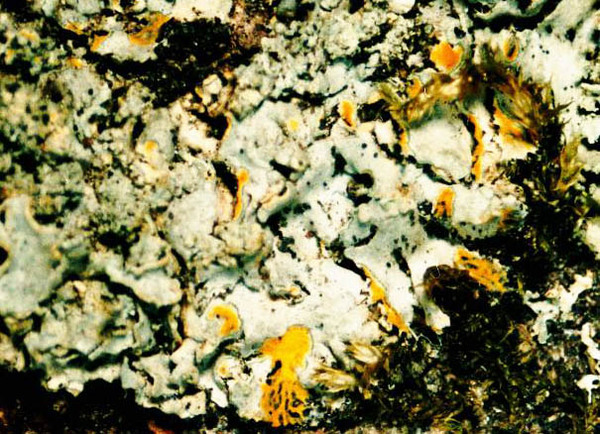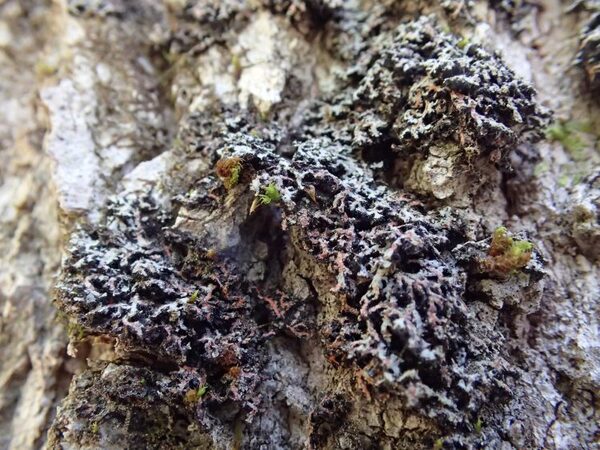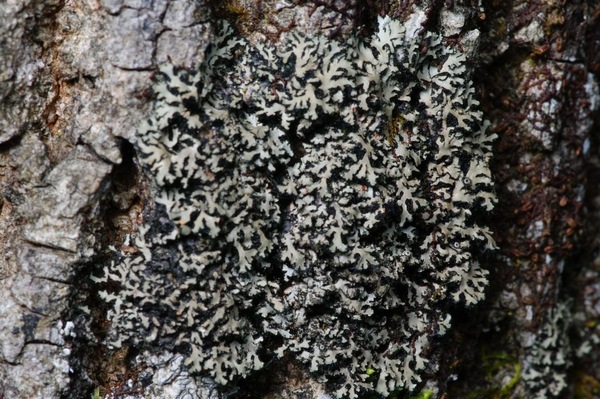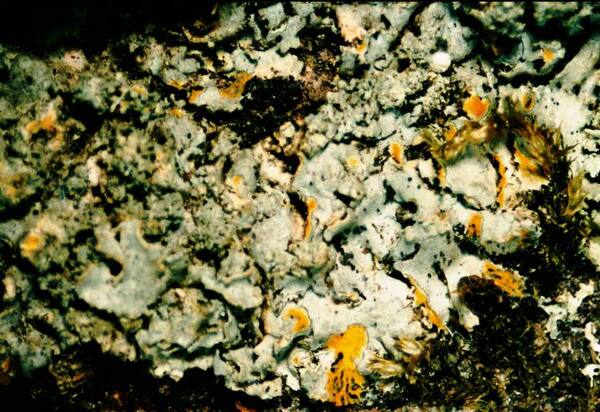Phaeophyscia rubropulchra (Degel.) Essl.
Bot. Not., 131: 262, 1978. Basionym: Physcia orbicularis f. rubropulchra Degel. - Ark. F. Bot., 30A, 1: 58, 1942.
Synonyms:
Distribution: N - VG (Masson 2008), Frl (Masson 2008). C - Laz (Masson 2008).
Description: Thallus foliose, heteromerous, dorsiventral, narrow-lobed, closely adnate in the center, forming orbicular to usually irregular, 1-3 cm wide rosettes, the individual thalli often coalescing to cover larger surfaces. Lobes grey to pale brown in sun-forms, 0.3-1 mm broad, plane to weakly concave, epruinose, ascending at tips, with terminal, labriform soralia with granulose soredia which are mostly >40 µm in diam. Lower surface black, with abundant, black, mostly simple rhizines. Upper cortex paraplectenchymatous, 12-24 µm thick; medulla yellow to orange-red; lower cortex paraplectenchymatous, 14-24 µm thick. Apothecia very rare, lecanorine. Asci 8-spored, clavate, the K/I+ blue tholus penetrated by a faintly amyloid apical cushion with parallel or diverging flanks, the wall K/I-, surrounded by a K/I+ blue outer layer, Lecanora-type. Ascospores 1-septate, brown, ellipsoid, Pachysporaria-type, 23-39 x 10-16 μm. Pycnidia rare. Photobiont chlorococcoid. Spot tests: cortex K-, C-, KC-, P-; medulla K+ red, C+ red. Chemistry: medulla with skyrin and fatty acids. Note: a mainly mild-temperate epiphytic species known from eastern North America and West Asia, with a few relict stations in Europe (see Masson 2008).
Growth form: Foliose, narrow lobed
Substrata: bark
Photobiont: green algae other than Trentepohlia
Reproductive strategy: mainly asexual, by soredia, or soredia-like structures (e.g. blastidia)
Commonnes-rarity: (info)
Alpine belt: absent
Subalpine belt: absent
Oromediterranean belt: absent
Montane belt: absent
Submediterranean belt: extremely rare
Padanian area: absent
Humid submediterranean belt: rare
Humid mediterranean belt: absent
Dry mediterranean belt: absent

Predictive model
Growth form: Foliose, narrow lobed
Substrata: bark
Photobiont: green algae other than Trentepohlia
Reproductive strategy: mainly asexual, by soredia, or soredia-like structures (e.g. blastidia)
Commonnes-rarity: (info)
Alpine belt: absent
Subalpine belt: absent
Oromediterranean belt: absent
Montane belt: absent
Submediterranean belt: extremely rare
Padanian area: absent
Humid submediterranean belt: rare
Humid mediterranean belt: absent
Dry mediterranean belt: absent

Predictive model
 Index Fungorum
Index Fungorum
 GBIF
GBIF






